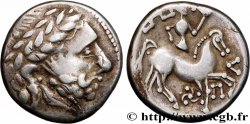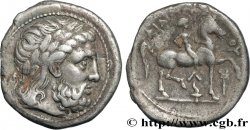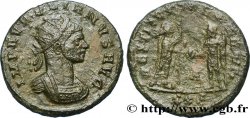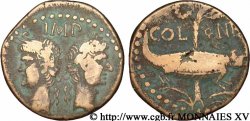v32_0961 - CELTI DEL DANUVIO Tétradrachme “au rameau”
MONNAIES 32 (2007)
Начальная цена : 420.00 €
Назначить цену : 750.00 €
непроданный лот
Начальная цена : 420.00 €
Назначить цену : 750.00 €
непроданный лот
Тип Tétradrachme “au rameau”
Дата: (IIe-Ier siècles avant J.-C.)
Металл: silver
Диаметр: 25,3 mm
Ориентация осей монеты: 12 h.
Вес: 13,96 g.
Редкость: R2
Комментарии о состоянии
Monnaie bien centrée avec tous les détails biens venus, mais avec une certaine usure homogène. Le métal est recouvert d'une très légère patine grise
Ссылки в каталоге: :
Происхождение:
Cette monnaie provient d’une collection américaine du début du XXe siècle
Лицевая сторона
Аверс: легенда: ANÉPIGRAPHE.
Аверс: описание: Tête laurée de Zeus à droite ; grènetis.
Обратная сторона
Реверс: Описание: Cavalier au pas à droite, tenant une palme de la main droite ; le cheval lève l'antérieur à droite, encadrée d’un annelet pointé et d’un dauphin ; au-dessus du cavalier, la légende.
Реверс: легенда: FILIP
Комментарий
Si le statère d'or de Philippe II de Macédoine a servi de prototype à de nombreuses imitations gauloises, le tétradrachme n'a pas été imité en Gaule, mais reste principal sujet d'inspiration des monnaies pour les Celtes du Danube (LT. 9697-9767, 9768-9832, 9618-9630, 9870-9886). Les premières imitations furent frappées dans le premier quart du IIIe siècle avant J.-C. La fabrication des copies serviles, puis des imitations, enfin des frappes celtiques continuèrent pendant plus de deux siècles.
Le revers est particulièrement intéressant, avec des motifs assez inhabituels ; le dauphin devant le cheval est particulièrement bien visible, alors qu'il est difficile de déterminer la nature du motif partant de la ligne d'exergue.
Cet exemplaire correspond au n° 961 ou 973 (même photo) du musée de Vienne.
While the gold stater of Philip II of Macedon served as a prototype for many Gallic imitations, the tetradrachm was not imitated in Gaul, but remains the main source of inspiration for coins for the Danube Celts (LT. 9697-9767, 9768-9832, 9618-9630, 9870-9886). The first imitations were struck in the first quarter of the 3rd century BC. The manufacture of servile copies, then imitations, and finally Celtic strikes continued for more than two centuries. The reverse is particularly interesting, with rather unusual motifs; the dolphin in front of the horse is particularly visible, while it is difficult to determine the nature of the motif starting from the exergue line. This example corresponds to no. 961 or 973 (same photo) in the Vienna Museum
Le revers est particulièrement intéressant, avec des motifs assez inhabituels ; le dauphin devant le cheval est particulièrement bien visible, alors qu'il est difficile de déterminer la nature du motif partant de la ligne d'exergue.
Cet exemplaire correspond au n° 961 ou 973 (même photo) du musée de Vienne.
While the gold stater of Philip II of Macedon served as a prototype for many Gallic imitations, the tetradrachm was not imitated in Gaul, but remains the main source of inspiration for coins for the Danube Celts (LT. 9697-9767, 9768-9832, 9618-9630, 9870-9886). The first imitations were struck in the first quarter of the 3rd century BC. The manufacture of servile copies, then imitations, and finally Celtic strikes continued for more than two centuries. The reverse is particularly interesting, with rather unusual motifs; the dolphin in front of the horse is particularly visible, while it is difficult to determine the nature of the motif starting from the exergue line. This example corresponds to no. 961 or 973 (same photo) in the Vienna Museum








 Cообщить об ошибке
Cообщить об ошибке Распечатать страницу
Распечатать страницу Отправить мой выбор
Отправить мой выбор Задать вопрос
Задать вопрос Consign / sell
Consign / sell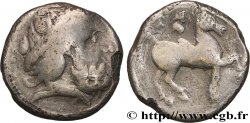
 Информация
Информация